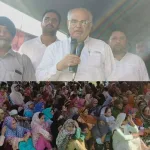Jammu, Jan 13: Government on Saturday said power houses in Jammu & Kashmir during winters generate a maximum of 600 MW against their rated capacity of 3500 MW due to a fall in water levels in the rivers.
However, with the peak demand, the government said reaching up to 3200 MW in winters cannot be solely met by hydroelectric power plants.
“Out of the existing installed generation capacity of 3500 MW, 1140 MW is contributed by UT-owned plants, including projects like 900 MW Baglihar, 110 MW Lower Jehlum, and 110 MW Upper Sindh. The remaining 2300 MW comes from central sector plants, with prominent ones being Salal, Dul-Hasti, Uri, and Kishanganga,” reads the statement.
Further out of J&K’s own power houses, a major portion of electricity generation is from the Baghliar Hydro Electric Project (BHEP), producing approximately 900 MW.
Over the last four years, J&K has not signed any Power Purchase Agreements (PPAs) for selling power outside J&K from its power houses; the same quantum has been maintained as per previous PPAs. In contrast, new PPAs have been signed to procure power to the tune of 3000 MW for J&K, including 900 MW of hydro from under construction Joint Venture (JV) projects namely Pakal Dul, Rattle, Kiru and Kwar of Chenab Valley Power Projects(CVPP) and 1600 MW of solar power from different CPSUs at a nominal price in2023.
Recently, UT Administrative Council has accorded procurement of 500 MW of firm power from thermal generators for which the PPA signing is in process. This doubles the capacity/availability of power to J&K in the coming years.
With regard to under construction JV projects of CVPP (with 51% stakes held by NHPC and 49% by J&K Government ), the projects are being developed through Debt-Equity model in the ratio of 70:30 at total cost of 22200 Cr. J&K’s equity contribution comes as grants from the Ministry of Home Affairs (MHA), while the debt portion is secured through loans from banks.
Other locally owned power generation plants, including Upper Sindh, Lower Jehlum, Chennani, collectively generate around 200-250 MW.
This totals approximately 1100-1140 MW through UT’s own generating stations, which drops to around 200 MW in winters. The remaining power requirement during winters is met through Central Generating Stations (CGS) both within and outside J&K.
Of the total installed capacity of 1140 MW in the UT sector, a major share of around 1030 MW (88% of total capacity) is utilized in J&K, while the remaining 150 MW is sold outside J&K, honouring agreements executed in 2009.
For raising the necessary loans its essential for the CVPP to execute advance PPAs for selling power post-commissioning of the projects. The tariff for the sale of power is assessed through established procedures and determined by the Central Electricity Regulatory Commission (CERC).
The tariff of the said CVPP projects ranges between Rs. 3.92 to 4.64 per unit. J&K’s has signed PPAs for 900 MWs of power from the said projects, considering the additional requirement of Hydro-based power in the existing power portfolio and the pricing, while for the remaining quantum, the CVPP has signed PPAs with other States.
In terms of tariff charges, Jammu and Kashmir offers one of the lowest tariff rates to its consumers in various categories, underscoring its commitment to providing affordable electricity to its residents. During the current financial year, the electricity duty on the power has also been withdrawn.
One significant challenge is that only 55% of consumers have electricity meters installed at their houses, while power consumption often exceeds the agreed loads by the consumers.





